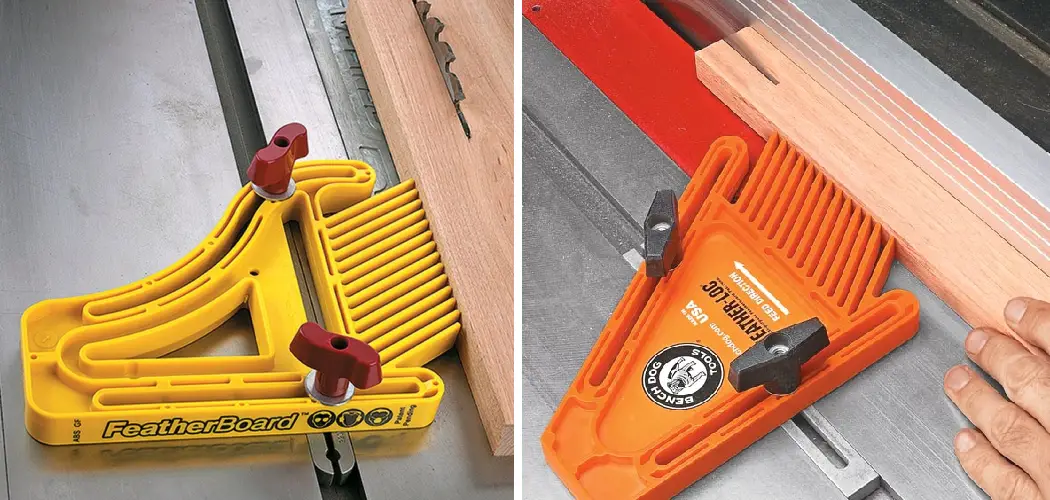Using a featherboard is a fundamental woodworking technique that enhances both safety and precision in woodworking projects. A featherboard is a simple yet effective device designed to guide and support wood as it moves through cutting tools, such as table saws or routers.
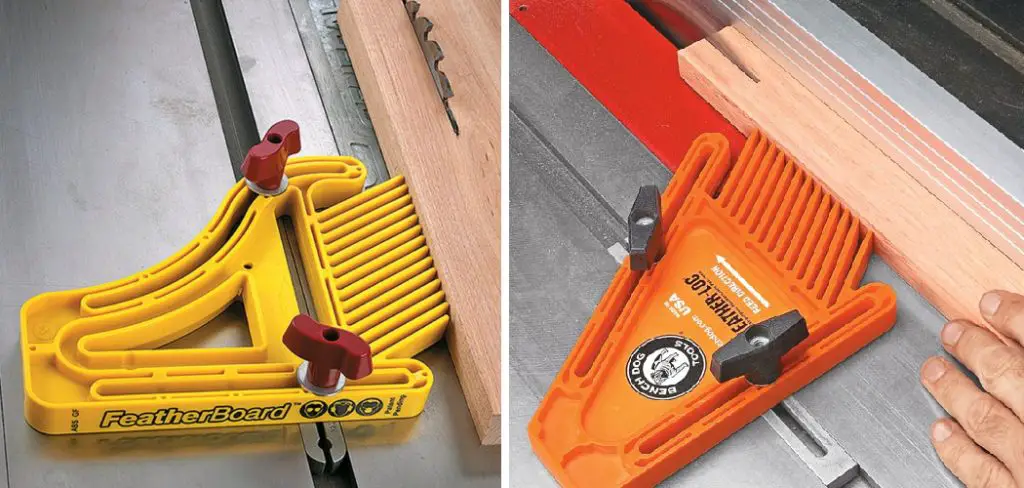
Shaped like a thin, flat piece of wood with strategically placed flexible fingers resembling feathers, a featherboard applies pressure against the workpiece, preventing kickback and ensuring a consistent and accurate cut.
Whether you’re a seasoned woodworker or just starting out, understanding how to use a featherboard is essential for achieving clean cuts, reducing the risk of accidents, and maintaining a high level of control during woodworking tasks. In this article, we will provide detailed insights and step-by-step guidance on how to effectively use a featherboard, empowering you to elevate your woodworking skills and safety.
What Is a Featherboard?
A featherboard is a woodworking jig that helps to keep stock against the fence of a table saw, router table, or other power tools. It has a series of adjustable fingers or “feathers” which apply pressure against the workpiece as it passes over the blade. This helps to reduce kickbacks and provide more accurate cuts.
When using a featherboard, it is important to set the fingers correctly in order to ensure that they provide adequate pressure against the workpiece. Adjusting the tension of the fingers will depend on the thickness and type of material being used. It can also be helpful to use two featherboards for larger pieces of wood or areas where extra support is needed.
Importance of Using a Featherboard in Woodworking
Woodworking is a craft that requires an incredible amount of precision and accuracy. Those who take on woodworking projects must be able to make precise cuts, angles, and curves in order to create the desired result. This is where the featherboard comes in. The featherboard is a tool used for guiding a piece of wood along the edge or face of a saw blade or router bit in order to create the desired effect.
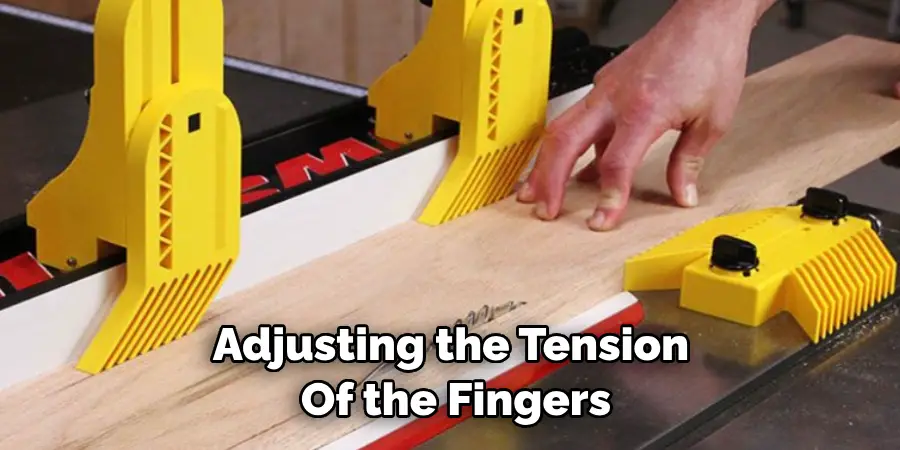
One of the key benefits of using a featherboard is that it helps to keep your fingers and hands away from the tool’s cutting surface, as well as any other parts that could be hazardous. It also holds the piece of wood firmly against the table, so that you can make sure it doesn’t move while you’re working on it. This can be especially useful when making curved cuts or intricate patterns.
In addition to its safety benefits, a featherboard also helps to ensure accuracy and consistency in your woodworking projects. By keeping the piece of wood firmly against the table, you can make sure that each cut is exactly where it needs to be, leading to a more finished and professional look.
There are several different types of featherboards available, each suited for different kinds of woodworking projects. If you’re just starting out with woodworking, it’s important to do some research and find the right kind of featherboard for the type of project you plan to undertake. There are also several different ways to attach a featherboard, so make sure you understand the steps involved before attempting it on your own.
10 Steps How to Use a Featherboard
1. Assemble the Featherboard
The first step in using a featherboard is to assemble it. This involves attaching the base plate to the fence of your saw or router table and then securing the featherboard clamps onto the base plate. Make sure that the featherboard clamps are securely fastened before moving on to the next step.
2. Adjust the Featherboard Height
Once you have assembled your featherboard, you will need to adjust its height so that it is at the same level as your workpiece. To do this, loosen the knobs on either side of the featherboard and move it up or down until it is at the desired height. Once you have adjusted its height, tighten the knobs again to secure it in place.
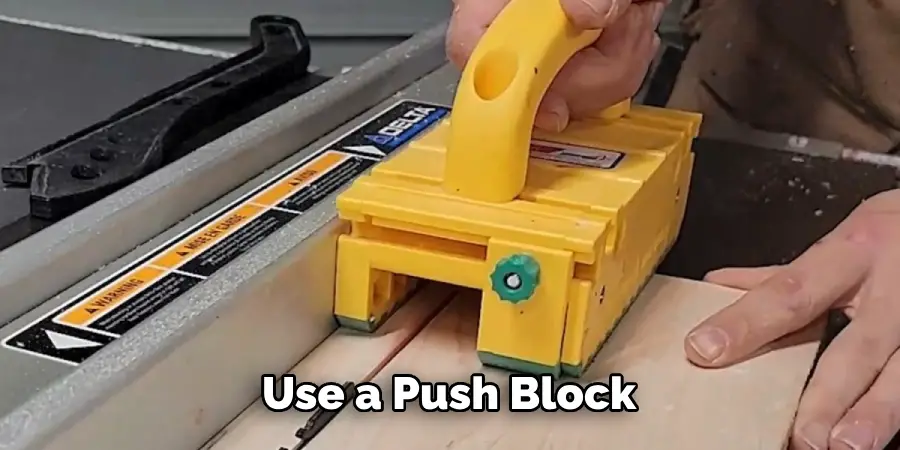
3. Position Your Workpiece
With your featherboard now properly adjusted, you can position your workpiece against it so that it is firmly secured in place. Make sure that your workpiece is flush against both sides of the featherboard and that there are no gaps between them. This will ensure that your workpiece does not move during cutting or routing operations.
4. Secure with a Push Block
For added safety when using a featherboard, you should also use a push block to help keep your hands away from any moving blades or bits while making cuts or routs in wood or other materials. Place one end of the push block against your workpiece and use it to apply pressure while pushing your workpiece through any cutting operations being performed on it by hand tools such as saws and routers.
5. Set Blade Depth
Table saws and routers should be set with their blades slightly below where they will actually make contact with wood or other materials when making cuts or routs in them. Setting blade depth ensures that if anything goes wrong during cutting operations, such as a kickback, only minor damage will occur instead of severe injury due to contact with sharp blades or bits at full speed and depth settings on power tools such as table saws and routers.
6. Start Cutting
When everything is ready for cutting operations, turn on your power tool and begin making cuts or routs in wood or other materials using slow but steady pressure applied by hand tools such as saws and routers while pushing material through them with a push block held firmly against it for added safety.
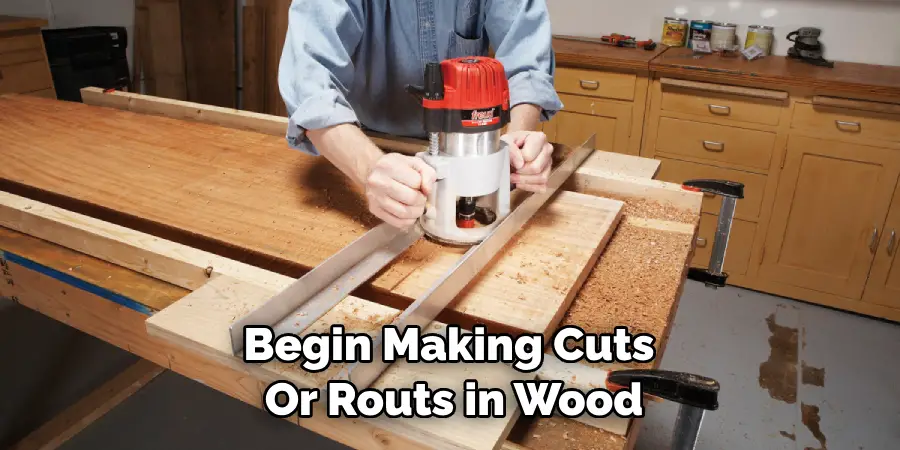
7. Stop Cutting When Finished
When finished with cutting operations, turn off power tools immediately and wait for all blades or bits to come to a complete stop before removing material from them. Then, remove material from table saws or routers carefully so as not to get injured by sharp blades or bits. Always wear protective clothing, such as eye protection and hearing protection, when operating power tools.
8. Clean Up Area
After completing all cutting operations, make sure to clean up any debris left behind on tables, fences, floors, etc., so as not to create an unsafe working environment for yourself or anyone else who may be nearby. Always unplug the machine when cleaning and wear protective gloves if necessary.
9. Check Featherboards for Damage
After cleaning up an area, inspect all parts of featherboards used during cutting operations for signs of wear, tear, cracks, etc., which could lead to further damage if not addressed promptly. If any damage is found, replace affected parts immediately so as not to cause further harm when using power tools again later on.
Be sure to use the appropriate sized featherboard for each task and do not force a larger one into a smaller space. Also, check that wing screws are tightened securely to prevent them from slipping during use.
10. Store Featherboards Properly
Finally, store all parts of featherboards in a safe place away from children’s reach when not in use so as not to cause injury due to misuse by those unfamiliar with how they operate correctly.
It is also important to keep all parts of the featherboard dry and away from extreme temperatures or direct sunlight when not in use, which could damage the wood. Taking these steps will ensure that your featherboards last as long as possible and remain safe for everyone using them.
Things to Consider When using a Featherboard
It is important to remember when using a featherboard that safety should be your number one priority. Always make sure the blades of your tools are properly guarded and that you use protective eyewear while working with the feather board. Additionally, ensure that you keep all loose parts and debris away from the area where you are working.

When setting up your featherboard, make sure that the board is level and secure. Check to see if it’s tight against your workpiece and that the blades of your tools will not come into contact with the feather board during use.
You should also adjust the tension on the board so that it holds firmly against your workpiece but does not cause damage or denting to it. Finally, do not forget to test the featherboard before cutting into any material.
If you’re using a handheld router and a featherboard, make sure that the board is held in place securely while you are routing. This will help ensure that it stays firmly against your workpiece and reduces the chances of kickback or damage. Additionally, be sure to keep your hands away from the spinning blades of your tools.
Conclusion
As you can see, using a featherboard is a great way to improve your woodworking safety and accuracy. With just a few simple steps you can store your long boards more securely, reduce vibrations, and protect your hands and fingers from being accidentally injured by the saw blade or router bit. Now that you know how to use a featherboard, why not try it out?
Not only will it make your work safer and more efficient, but it could also give you peace of mind knowing that all of your projects have been initiated with the utmost care. If you take the time to practice the methods discussed here, you’ll be able to get the most efficient use out of your featherboard while getting an enhanced level of control with each type of cut.

